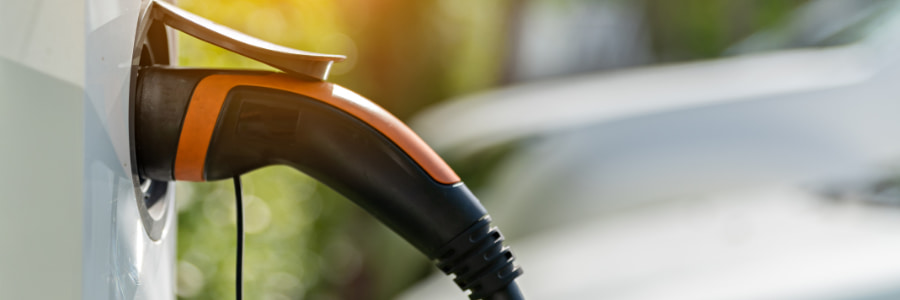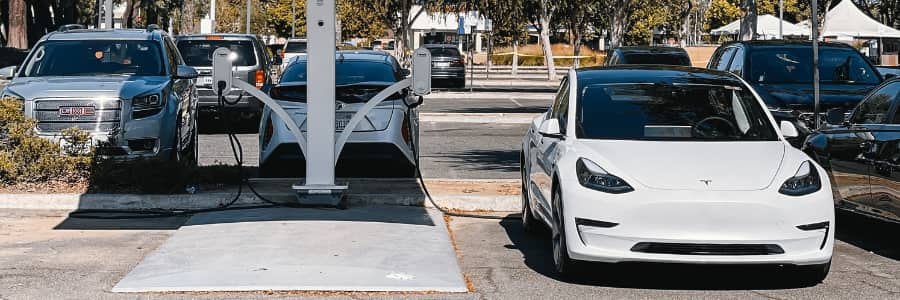Smart or dumb? Price range? Charging capabilities? There are plenty of stats and facts to go through for if you are a electric car owner looking to buy a charge box for your home.
Here, we look at some of the qualities that can help find the right charge box.
We also map out the performance of some of the most popular charge boxes.
The charge boxes in question include Easeebox, Charge Amps, Go-e, EVBox, and DEFA.
Read on to find out more about the individual criteria and what they cover.

One of the most critical aspects of charge boxes is how smart they are. A “dumb” charge box is one that simply charges the car, period. For some owners, that is perfect. For others, a smart charge box is a better choice. These are charge boxes with the ability to connect to Wi-Fi or PLC. Through the connection, you can automate, monitor and control charging, review past performance through True Energy’s app. Having a smart charge box can also be nececssary for demand response program participation.
True Energy’s app also enables you to optimise charging for when electricity prices and the climate impact of energy production (something closely linked to how much of the production at a given time is coming from renewable energy sources) are lowest.

There are two standard ways of connecting a charge box to your home’s energy grid: hardwired or plug-in. Hardwired charge boxes are permanently attached to the electric supply. If you want to remove it, you must open up the charger and remove the wiring. A plug-in charge box is not permanently connected to the electric supply. Instead, it is plugged into an electrical receptacle (generally speaking a power outlet).
The best solution for you can depend on how quickly you want to charge your vehicle (see more later in this guide). Electric cars and their batteries are developing at a rapid pace. Today, few home chargers need to be more than 11kW (level 2 or level 3), as this is the maximum charge rate for most cars. It may also be the case that some homes will not have sufficient charging infrastructure (cables and connections to the energy grid) to safely accommodate charging at 11kW or above.

Options and extras for a charge box can involve a long list of different choices. Some may be more relevant and useful than others. It all depends on your situation and needs. As with other aspects that should form parts of the decision-making process, you should be aware that the market for electric vehicles – and the features and extras you may want to consider – is not static. Think about the future – and perhaps even your next EV – as well and your current needs before making a final call.
Some of the options that we could consider, if we were making the decision, would include design. In this context, we are talking about both if it is weather-proof enough to be placed outside or on the side of an uncovered wall. We are also considering the physical form. This is, after all, something you will be using on a daily basis. The colour, shape and ease-of-use should all be considered before a final purchase is made.
Furthermore, the charge cable length, the ability to neatly wrap it up when not in use, added safety features, locking features and type of internet connectivity are all features and options we would consider. Finally, most of the charge boxes come in different max kW charging modes. Here, we would generally recommend charge boxes with a minimum of 11kW.

Charge boxes for your home have a broad price range. You can generally expect to spend somewhere between $400 and $1,200. The price may be linked to features such as maximum charge capacity.
There may be cheaper versions on the market, but you will want to secure a high quality, safety-certified electric vehicle charging station.
That said, spending more money is not always equal to getting more. You might be able to secure good deals through special offers and discounts, or by purchasing a charge box through your energy utility. The latter may also ease integration in some situations, such as where you can earn monetary rewards for making your car available as part of a buffer to the energy grid. This is a service that True Energy offers in collaboration with partner utilities.

Charge boxes are going to be equipped to deal with either 120 volts, 240 volts or both. If they are capable of both, the charger is referred to as a Level 1/2 charger.
For some manufacturers, 240 volts (Level 2) is sold as an add-on option. One of the benefits of Level 2 charging is that it is faster. Calculating exactly how quickly you can expect your EV to charge – and how far it can drive on a given charge – is a bit of a science. One reason is that charge speed also depends on ampere (often what kind of plug you have) – as well as other metrics.
However, a good rule of thumb is to figure out how many kilometres you can drive by using 1kWh of energy. Most cars will display this. Based on this, it should be possible to calculate the charge speed.
Charge speed is, as previously mentioned, linked to maximum kW. A related consideration is whether you need rapid charging at home at any point. If your electric car is solely used for commuting, meaning one trip in the morning and one in the afternoon, you have all night to charge your car and can easily ‘make do’ with lower charge speeds.
Other features and abilities can be significant, depending on your specific situation. For example, outdoor-rated will be extra crucial for users who do not have a garage or similar to park their EV inside. Here, you will want to know the difference between NEMA 3 and NEMA 4. The latter indicates that the charge box has a bit more protection against weather and water.
The length of charging cable that you get as standard may also be important, as is the case for a warranty’s specifics. For others, it may be the ability to review charging session history, integration with Amazon Alexa or that it has been certified by a nationally recognised testing laboratory.

All of the above may have helped you in many regards, but perhaps not given a clear cut answer.
The intent of this article has not been to provide that. Instead, we hope it has helped you identify what features you need to consider when choosing a charge box for your home.
Every electric car owner’s situation is unique. The answer to what charge box is best will vary accordingly.
We would generally recommend that you get a charge box with Wi-Fi capability. This enables linking to third-party solutions that can optimise your charging. In this way, charging becomes as cheap and climate-friendly as possible. Outdoor proof is also preferable. Then you can place the charger where you wish and not have to worry about potential weather damage.
Fixed-cable provides the best protection of your existing electricity setup, but socket-ready charging is also good for some situations. However, if you are going to aim for higher kW, then fixed cable is probably the best.
With regard to kW, we would recommend going for 11kW, which should serve you well for a mix of charging needs.
Read much more about charge boxes, EVs, and charging on our blog.